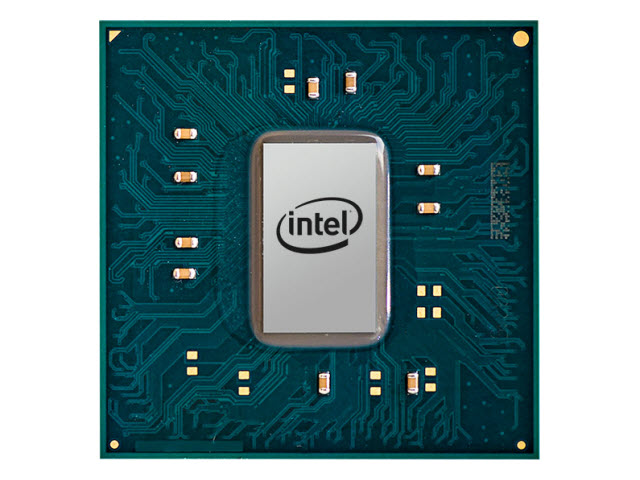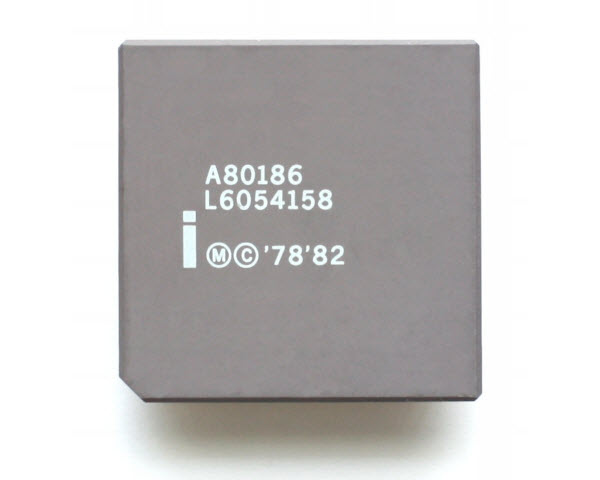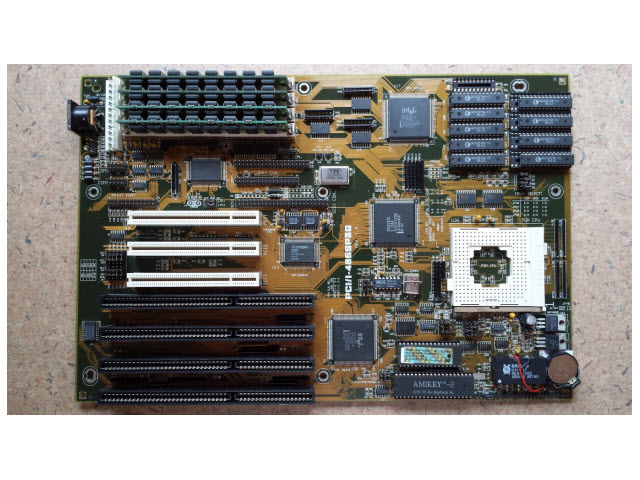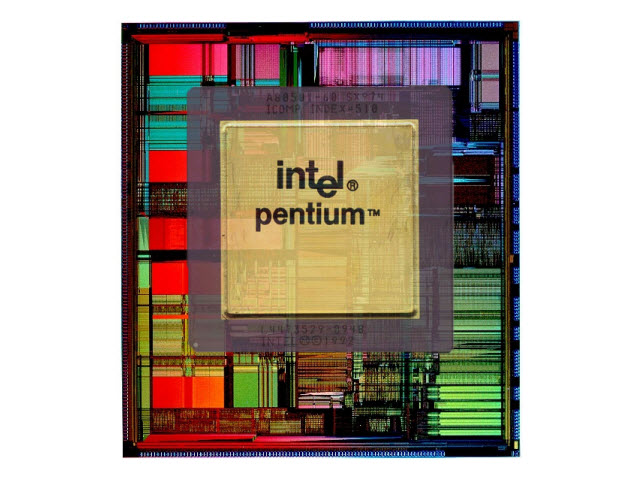History of Intel Chipsets
Introduction

Since the beginning of the computer revolution, chipsets have been an integral part of a functioning PC. In terms of importance, the chipset may be second only to the CPU. It can be described as a backbone facilitating communication between dissimilar pieces of hardware. In this article, we examine the evolution of Intel's chipsets from its first one in 1971 to the recently released Z370.
But first, it is important to define what a chipset really is. In the early days of PCs, the term was often used to cover the combination of dozens of components, including the CPU, which were designed to work together. Over time, this definition changed, and we now refer to chipsets in a more specific manner. It will be important to keep this in mind as we look at Intel's earliest chipsets, and the slow transition to today's Platform Controller Hubs (PCHs).
MORE: Best CPUs
MORE: The History Of Intel CPUs
MORE: The History Of AMD CPUs
MCS-4

Intel's first CPU was the 4004, a relatively simple four-bit processor released in 1971 as part of the company's MCS-4 (Micro Controller Set 4) chipset. The MCS-4 contained three other parts: the 4001 ROM chip, 4002 RAM chip, and the 4003 Shift Register. It was widely used inside calculators due to a relatively compact four-chip design.
MORE: Best CPUs
Get Tom's Hardware's best news and in-depth reviews, straight to your inbox.
MORE: The History Of Intel CPUs
MORE: The History Of AMD CPUs
MCS-8, MCS-80, And MCS-86

Following the 4004's success, Intel started production on eight-bit processors called the 8008 and 8080. These CPUs were also considered part of the MCS-8 and MCS-80 chipsets. Unlike the MCS-4, the MCS-8 and MCS-80 contained more than four chips. Some of them, like the 8224 clock generator, 8257 DMA controller, and 8259 interrupt controller, all of which are today integrated into the CPU, were mandatory for operation. Other chips were optional and extended the system's features and performance.
The trend extended to Intel's first 16-bit processor, the 8086, and the MCS-86 chipset also contained several chips, some of which were optional. The MCS-86 had one key change: the addition of Intel's first FPU co-processor, known as the 8087. The FPU is also now a common core component of most modern CPUs.
MORE: Best CPUs
MORE: The History Of Intel CPUs
MORE: The History Of AMD CPUs
Intel's 80186 Chipset

In 1982, Intel introduced its 80186 processor, which was designed as an embedded solution. To help reduce its overall footprint, then, Intel built the clock generator, DMA channels, interrupt controller, timers, and wait-state generator into the CPU. The 80186 didn't come close to the level of integration a modern SoC employs, but it did significantly reduce the number of companion chips required to create a functioning system. This move foreshadowed the gradual migration of more motherboard-based subsystems into the host processor, which continues to happen today.
MORE: Best CPUs
MORE: The History Of Intel CPUs
MORE: The History Of AMD CPUs
Chipset Conslidation

Whereas the 80186 was intended for compact embedded devices, Intel's 80286 was designed with a focus on pushing the performance envelope forward. To support the 80286, Intel licensed ZyMOS's POACH technology to create its 82230/82231 chipset, which condensed two interrupt controllers, an interval timer, the clock generator, bus controller, two DMA controllers, the RTC, and a memory mapper down into two chips. Each of those subsystems was previously a discrete component, so this represented an unprecedented level of integration that helped boost performance. It also reduced production costs of contemporary motherboards.
MORE: Best CPUs
MORE: The History Of Intel CPUs
MORE: The History Of AMD CPUs
Chipsets for the 80486

In late 1992, Intel launched the 420TX chipset (code-named Saturn) for its 80486 CPU. The 420TX was the first Intel chipset to support PCI 1.0, and it could accommodate up to 128MB of RAM. The chipset's front-side bus ran at up to 33 MHz. Later, as Intel introduced more efficient variants of the 80486, it became necessary to introduce core logic able to work at a lower 3.3V setting. This led to the introduction of the 420ZX (Saturn II) and the 420EX (Aries) 1994. Both models added to the functionality of their predecessor. The 420ZX supported up to 160MB of RAM and PCI 2.1. The 420EX was limited to 128MB of RAM, but gained support for PCI 2.0. The 420EX also sported a faster 50 MHz FSB.
Major new features:
- PCI 1.0 (1989), PCI 2.0 (1994), PCI 2.1 (1994)
- 160MB Memory Support (1994)
- 50 MHz FSB (1994)
Processors in this era:
- 80486 5V/3.3V
MORE: Best CPUs
MORE: The History Of Intel CPUs
MORE: The History Of AMD CPUs
Consumer Pentium Chipsets

Intel's first Pentium-branded products launched in 1993. The company designed a full range of chipsets to support its Pentium line-up, starting with the 430LX (code-named "Mercury"), featuring a front-side bus capable of operating at either 60 or 66 MHz. And it could support up to 192MB of RAM, too. Intel would later release the 430FX (code-named "Triton") in 1995 and the 430VX (code-named "Triton II") in 1996 to support improved Pentiums. Both chipsets were limited to 128MB of RAM, but back then that was more memory than most home users needed.
Intel's best consumer Pentium chipset, the 430TX (code-named Triton III), was released in 1997. It supported the fastest Pentiums Intel made, and extended memory capacity to 256MB.
It is noteworthy that this generation of hardware is where the northbridge and southbridge terminology comes from. Also, USB ports started showing up on motherboards around this time. They would not be integrated into the chipset for years to come, however.
Major new features:
- 66 MHz FSB (1993)
- 192MB Memory Support (1994)
- EDO memory (1995)
- SDRAM memory (1996)
- USB bus (1996)
- UDMA33 mode (1997)
Processors from this time:
- Pentium
MORE: Best CPUs
MORE: The History Of Intel CPUs
MORE: The History Of AMD CPUs
Business Pentium Chipsets

With the Pentium's introduction, Intel began segmenting its products to a greater degree than it had done previously. In total, the company created seven chipsets for the Penitum. Four of them were desktop-oriented, while two were targeted explicitly at workstations. The 430NX (code-named "Neptune") and 430HX (code-named Triton II) were Intel's first chipsets to support two processors on a single motherboard. They also pushed RAM support up to 512MB.
Major new features:
- Compatible with SMP (multi-CPU) (1994)
- 512MB max memory (1994)
- First Workstation Chipsets (1994)
MORE: Best CPUs
MORE: The History Of Intel CPUs
MORE: The History Of AMD CPUs
Intel's First Mobile Chipset: 430MX

Intel also pushed the Pentium into laptops with its 430MX chipset (code-named "Mobile Triton"), which was almost identical to the 430FX and 430VX, except for its power consumption. Intel optimized the 430MX for greater efficiency to improve its suitability as a mobile offering.
Major new features:
- First Mobile Chipset (1995)
MORE: Best CPUs
MORE: The History Of Intel CPUs
MORE: The History Of AMD CPUs
Pentium Pro And Pentium II Chipsets

In 1995, the Pentium Pro represented Intel's first x86 CPU designed explicitly for businesses, and its associated 450KX and 450GX pushed the limits of what a workstation or server could do to new highs. The 450GX was especially remarkable for its time, as it was able to support up to four CPUs and 8GB of RAM. The 450KX was a more budget-friendly solution, able to accommodate two CPUs and 1GB of RAM.
The 440FX chipset, later released in 1996, was designed for Pentium Pro and Pentium II CPUs. It was essentially a copy of the 440KX, but with added support for EDO and BEDO RAM in addition to FPM memory. The following year, Intel also released the 440LX, which lacked support for the Pentium Pro. But it was Intel's first chipset exposing an AGP 2x interface. The 440LX also could support up to 512MB of SDRAM, which was starting to take over as the dominant type of memory on the market at this time, partially due to its superior price point and high performance
Although there were several other chipsets designed for these processors, the last one of note was 440BX. Capable of running a 100 MHz front-side bus, the 440BX became extremely popular with enthusiasts as an overclocking-friendly platform.
Main new features:
- 8GB Memory Support (1995)
- SMP Up To Four CPUs (1995)
- SDRAM memory (1997)
- AGP 2x (1997)
- FSB 100 MHz (1998)
Processors from this time:
- Pentium Pro
- Pentium II
- Pentium III
- Celeron
MORE: Best CPUs
MORE: The History Of Intel CPUs
MORE: The History Of AMD CPUs
Intel's First iGPU: The 810

In 1999, Intel migrated its products to a new interface (Socket 370) and launched a family of compatible 800-series chipsets. The first of these was the 810, closely followed by the 810E and 810E2. The key difference between them was that the 810E and 810E2 supported a faster 133 MHz FSB. All three chipsets accommodated up to 512MB of SDRAM, but the 810E's and 810E2's faster FSB allowed them to facilitate more performance.
The 810 chipsets are notable for featuring Intel's first integrated graphics engine based on the company's short-lived i740 GPU, which was designed around the AGP interface to use system memory for textures. Motherboard vendors sometimes would equip the 810's iGPU with a small amount of dedicated memory for use as a frame buffer.
Because the iGPU helped reduce costs, the 810 chipsets were popular among mainstream buyers. Gamers avoided them, though, since the iGPU wasn't particularly powerful. These chipsets also did not come equipped with AGP ports, as the AGP connection was filled by the iGPU.
Main new features:
- 133 MHz FSB (1999)
- First iGPU (1999)
- PCI 2.2 (1999)
- SDRAM PC133 memory (1999)
Processors from this time:
- Pentium III
- Pentium II
- Celeron
MORE: Best CPUs
MORE: The History Of Intel CPUs
MORE: The History Of AMD CPUs
-
abryant Archived comments are found here: http://www.tomshardware.com/forum/id-3562448/history-intel-chipset.htmlReply -
richardvday Page 8 Business Pentium ChipsetsPicture 8 of 29Reply
With the Pentium's introduction, Intel began segmenting its products to a greater degree than it had done previously. In total, the company created seven chipsets for the Penitum -
almarcy I attended an Intel training session that introduced the 8008 and 8080. Their Field Training Engineer told our class that Intel's research had found that every 10 degrees Fahrenheit (!?) the ambient temperature was reduced doubled the useful life of the chip. Some things have changed. Not all. I never imagined 32 threads on sixteen cpus on one chip. No imagination, then ;) AMD, now.Reply -
tanngate I started my foray into computer building with the 8088s. Guess that makes me a dinosaur now lolReply -
stdragon Some of you may remember the odd COAST (Cache On A STick) modules. But there was a stranger one yet. It was for the iGPU built-in to MBs with the Pentium 3 i815 chipset. There as an actual memory module that slotted in the AGP slot. It was known as a "Display Cache Module" or "AGP Inline Memory Module (AIMM)". I used one back when I had an AOpen AX3S Pro. See the link below for more info on this odd piece of hardware.Reply
https://en.wikipedia.org/wiki/AGP_Inline_Memory_Module
-
pensive69 high5! I started my foray into computer building with the 8088s. Guess that makes me a dinosaur also.Reply
the real issue is that i still have all these darn chips in the old parts bins.
:) -
qmechanic Back in the days of the old Pentium processors, and for a time after, Intel was not the exclusive producer of chip sets for their processors. Time has faded my memory considerably, but back in the early days, Intel chipsets were not the ones to have for best performance. Companies like Via, AMD, and Nvidia made north bridge chipsets for Intel processors that seemed to have a performance advantage over the Intel chips. Any chance of seeing an article on that? I was in the military and deployed during the time these manufacturers stopped producing chips for Intel processors but I remember something about a suit filed by Intel which is why Intel is now the ONLY manufacturer of chipsets for their processors..?Reply
Thanks for bringing back the memories! Great article! -
stdragon Intel, AMD, and VIA were the gold standard. nVidia and SiS were essentially garbage chipsets that I can recallReply